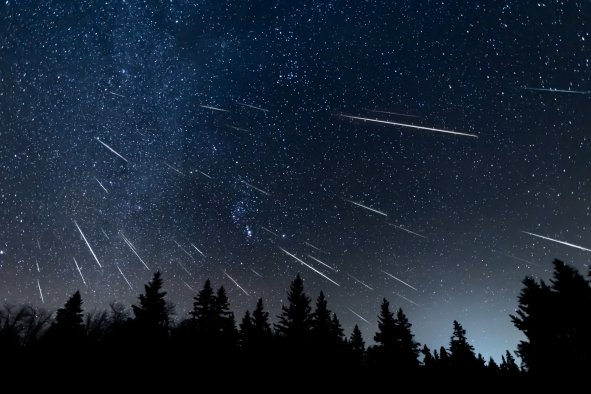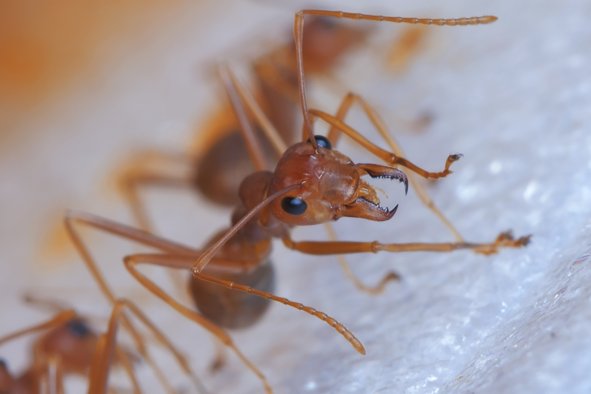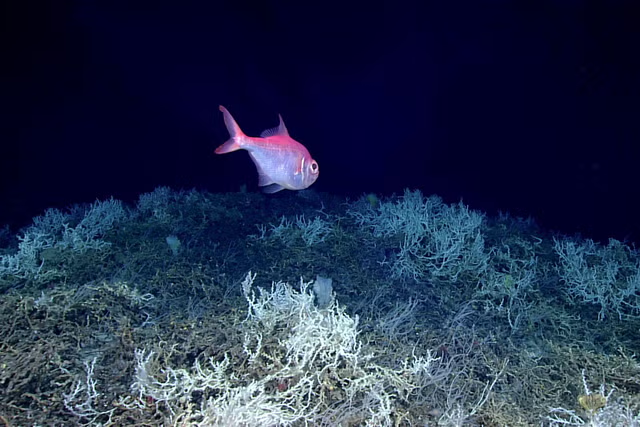Researchers have ranked the top 10 most invasive species in the Great Lakes based on the havoc they cause in the ecosystem and their impacts on humans.
These species include five fish, two mussels, and three plants and have a wide range of negative effects on the lakes' native flora and fauna, according to a new paper in the Journal of Great Lakes Research.
Starting with the species with the most impact, the top 10 consists of zebra mussels, quagga mussels, alewife, sea lamprey, Japanese stiltgrass, grass carp, water chestnut, common reed, round goby, and white perch.
"As of 2023, 188 non-native species have been identified in the Laurentian Great Lakes, with about half being considered benign. Some of these species have been elevated to the status of invasive (i.e. causing extreme negative effects)," the researchers wrote in the paper.
"Here, we identified and quantitatively ranked in order of impact (highest to lowest), the top ten aquatic nonindigenous species determined to have the most significant negative environmental and socio-economic effects."
Species were ranked based on several natural factors, including impacts on the health of native species, competition with native species, impacts on predator-prey relationships, effects on the genetics of native populations, impacts on water quality, and impacts on the ecosystem at large. The effects of these species on humans were also considered, such as impacts on human health, infrastructure, water quality for human consumption, aesthetics, economy and recreation.
All 188 nonnative species in the lakes were scored against each of these categories, with the top 10 listed above receiving the highest scores.
"The most common shared impacts of these 10 species involve direct harm to native species through predation or amplification of environmental contaminants, alteration of predator/prey dynamics among native species, aggressive competition with native species for food and habitat, and behaviors that result in costly damage to recreation, aesthetics, and economic activities," the researchers wrote.
Zebra mussels and quagga mussels are both small mussels native to Eastern Europe, having entered the Great Lakes via ballast water from ships. They consume large amounts of phytoplankton and zooplankton, disrupting the food web and reducing nutrient availability for native species. They also clog water intake pipes, causing significant economic damage.
According to the paper, zebra mussels had high scores for environmental health impact due to their ability to "bio-magnify pollutants such as polychlorinated biphenyls (PCBs) as well as natural toxins such as botulinum." This means that native birds and other species that eat them receive a high dose of these toxins.
Quagga mussels also bioaccumulate these chemicals but are usually found in less shallow waters than zebra mussels, meaning that they are less likely to be eaten by birds.
"Zebra mussels and quagga mussels also have high impacts on predator-prey relationships," the researchers wrote, and "received high impact scores for competing with native organisms for food and habitat resources."
These mussels were also ranked highly for human impacts due to their rapid growth on infrastructure and boats.
"Zebra and quagga mussels can impede navigational and recreational boating by increased drag from attached mussels," the researchers wrote. "Both zebra and quagga mussels are strong biofoulers that colonize water pipes, intake structures, and screens to the point of constricting water flow and thereby reducing pumping capabilities for power and water supply plants."
Third were alewives, which consume large quantities of zooplankton, directly competing with native fish species for this critical food resource. They are also known to eat the eggs and larvae of native fish, further reducing the populations of these species.
"Alewife have been shown to cause thiamine deficiency and, consequently, early mortality syndrome (EMS) in populations of alewife predators," the researchers wrote.
Sea lamprey was ranked as the fourth most impactful species. Native to the Atlantic Ocean, sea lampreys entered the Great Lakes through shipping canals.
This species' strange feeding method, which involves attaching to fish and sucking their blood, severely impacts populations of native fish like trout and whitefish. This, therefore, scores them highly for native health impacts, as well as impacts on the fishing industry.
They also impact predator-prey relationships by overfeeding on predator species, "allowing prey fish populations to grow unchecked," the authors wrote.
In terms of other human impacts, "the sea lamprey is the best-publicized cause of the collapse of fish stocks in the mid-20th century, and anglers are often alarmed and disgusted to find them attached to the sides of sport fish, where their bite marks may leave trophy fish less suitable for mounting," the paper said.
Grass carp have a voracious appetite for aquatic plants. They do not fully digest the plant material, resulting in significant amounts of undigested matter being expelled, which reduces water clarity and contributes to the growth of harmful algal blooms. This feeding behavior also severely impacts aquatic vegetation, which is crucial for the habitat and food sources of native fish and bird species.
"Grass carp are known to out-compete native species for both food and habitat," the researchers wrote. "Grass carp's intense removal of vegetation can have negative effects on native fish, such as elimination of food sources, shelter, and spawning substrates," and can "increase turbidity and may produce algal blooms when introduced to an area, rendering water unsuitable for human use"
Additionally, "grass carp is a host of the Asian tapeworm, which can infect humans who consume it in undercooked meat," the researchers wrote.
Japanese stiltgrass, water chestnut, and the common reed were next.
"Japanese stiltgrass and common reed were found to have significant impacts on the physical ecosystem, while water chestnut had moderate effects," the researchers wrote.
These plants outcompete native plants for space, reducing locations for food and shelter for native animals.
"Japanese stiltgrass and common reed can both block sightlines and reduce the aesthetic value of a landscape for birdwatchers, naturalists, and other recreational users, as well as reducing property values," they wrote.
Additionally, dense surface mats of water chestnut obstruct the exchange of air between the water surface and the atmosphere, resulting in significantly low dissolved oxygen levels in the water. Such low oxygen levels make these areas unsuitable for many fish species.
"When water chestnut populations die and sink, the decomposition of this large amount of plant material reduces the dissolved oxygen level even further, and, in extreme cases, can cause fish kills," the researchers wrote.
Finally, there was the round goby and the white perch. The round goby was found to compete with native fish for food and habitat and prey on the eggs and young of other fish species, further disrupting local ecosystems.
"The round goby is an aggressive and successful competitor for space and utilizes habitats similar to those of logperch," the authors wrote. "The round goby also competes for spawning sites with mottled sculpin."
The goby also feeds on zebra mussels, amplifying the effects of the other species' bioaccumulation of toxins.
"Because of its predation on zebra mussels, the round goby is capable of facilitating the bioaccumulation of contaminants up the food chain to piscivores that feed on it, which may eventually be consumed by humans," the researchers wrote.
The white perch has negligible impacts on environmental health but high impacts on predator-prey systems and competition, as it consumes the eggs of native species and outcompetes others for this food.
"White perch affects commercially important fish species through predation, egg predation, and hybridization," the researchers wrote. "The collapse of the walleye fishery on the north shore of Lake Ontario coincided with an increase in the white perch population."
All in all, there are a vast number of ways that invasive species can affect native wildlife, and humans that live near and regularly use the Great Lakes.
"While the effects of nonindigenous species on native species and environments can be complex, an improved understanding of their myriad impacts will foster more effective conservation, management, and restoration efforts in the Great Lakes," the researchers said.
Do you have a tip on a science story that Newsweek should be covering? Do you have a question about invasive species? Let us know via science@newsweek.com.
Disclaimer: The copyright of this article belongs to the original author. Reposting this article is solely for the purpose of information dissemination and does not constitute any investment advice. If there is any infringement, please contact us immediately. We will make corrections or deletions as necessary. Thank you.



